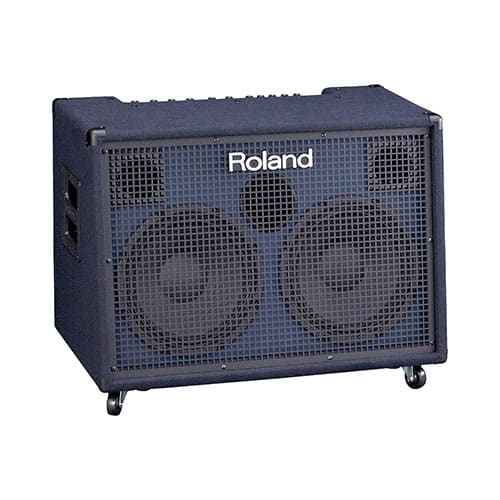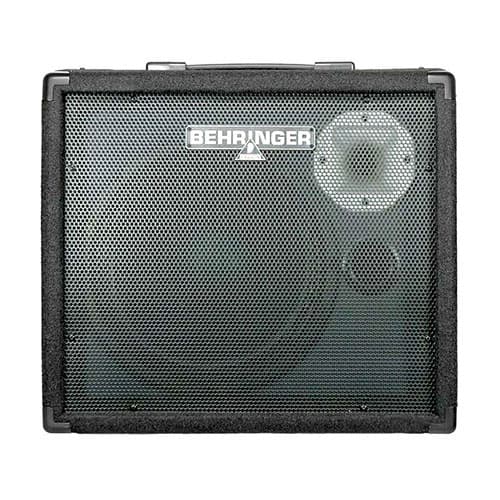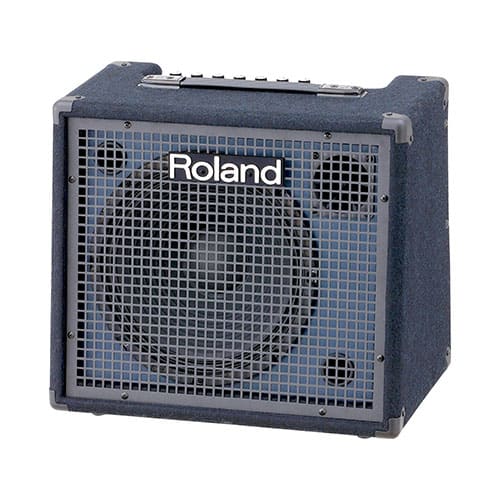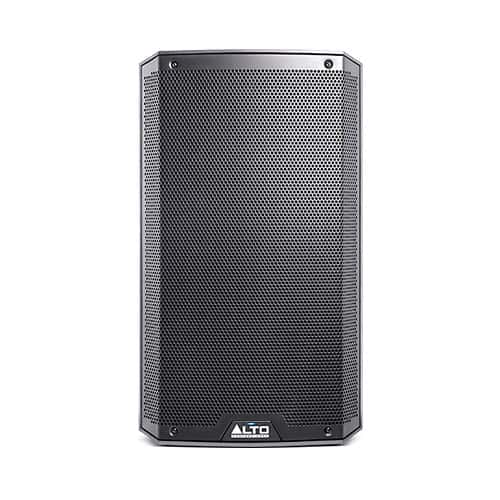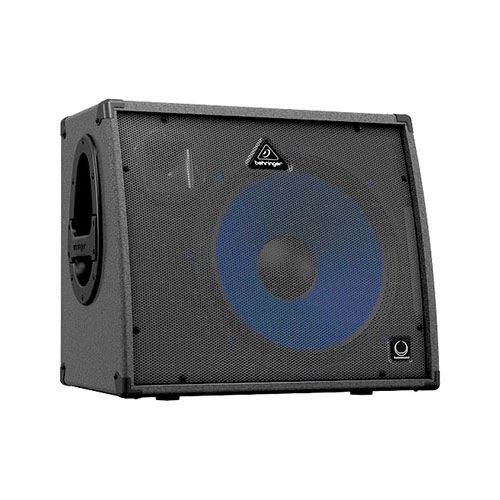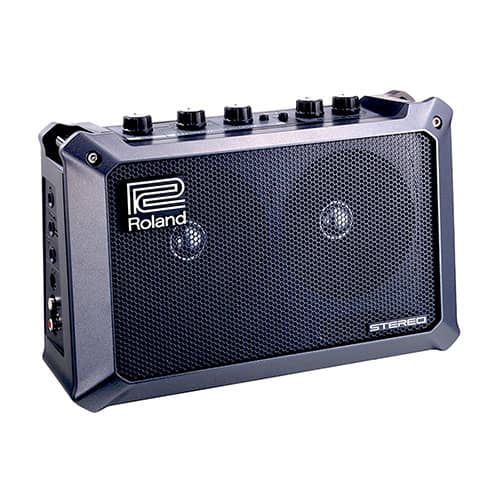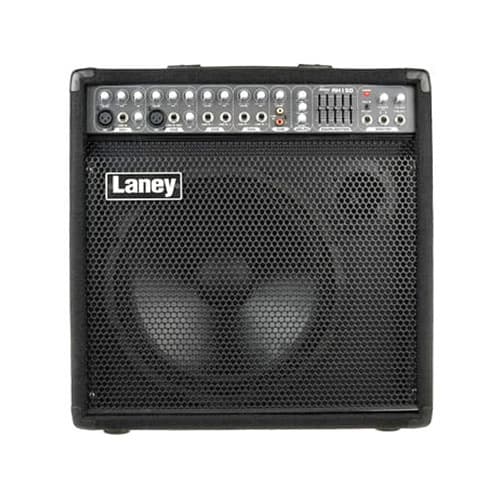Table of Contents
If you want stellar control over your keyboard’s sound, then a keyboard amp is an absolute essential. Compared to a PA system, the best keyboard amps offer detailed EQ along with clear sound and powerful effects.
The Peavey KB 2 emerged from the pack as the best keyboard amp overall. It blends an approachable interface with lots of channels and good sound.
There are plenty of great models to choose from beyond the Peavey amp, including the eight on this list. So, whether you want an amp for massive gigs or on-the-go practice sessions, you’re sure to find something here for you.
The 9 Best Keyboard Amps:
| Image | Keyboard Amps | Summary | Check Price |
|---|---|---|---|
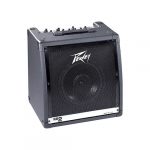 | Peavey KB 2 40-Watt Keyboard Amp | Best Choice: The best keyboard amplifier for all-around practice and small gigs | Check price |
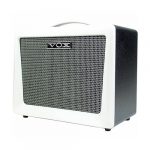 | Vox VX50KB 50-Watt Keyboard Amp | Best Value: Affordable practice amp with a warm, rich sound | Check price |
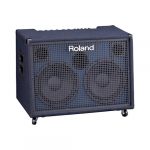 | Roland KC-990 Stereo Mixing Keyboard Amplifier | Premium Pick: Top-notch audio quality and powerful output for recording and gigs | Check price |
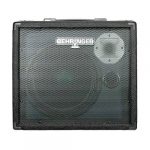 | Behringer Ultratone K900FX Keyboard Amplifier | Great Control At An Affordable Price: Powerful midsize keyboard amp with clear speakers and graphic EQ | Check price |
 | Roland KC-200 100-Watt 4 Channel Mixing Keyboard Amp | Top Quality In A Smaller Package: Classic Roland sound that’s perfect for jam sessions and small venues | Check price |
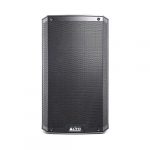 | Alto Professional TS310 2000 Watt PA Speaker / Keyboard Amp | Powerful And Versatile: PA-style speaker with the power and durability to handle any situation | Check price |
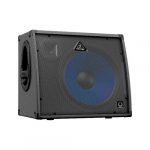 | Behringer KXD15 600-Watt Keyboard Amplifier | Outstanding Power And Control: 600 watts of output with an extremely detailed EQ section for gigs and recording | Check price |
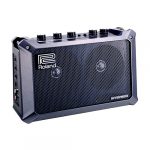 | Roland Mobile Cube Portable Stereo Keyboard Amp | Stereo Sound On The Go: Battery-powered amp that delivers full stereo sound and durable package | Check price |
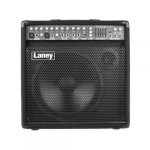 | Laney Audiohub Combo AH150 Keyboard Amp | Versatile And Affordable: Great midsize gigging amp that won’t break the bank | Check price |
Peavey KB 2 40-Watt Keyboard Amp
The Peavey KB 2 Keyboard Amp is a dependable 40-watt, 4-channel combo that can get the job done for almost any player. If you want a simple keyboard amp with clean and balanced sound, this is a great option for you.
The Peavey KB 2 offers four channels, each with their own volume control. The first two channels use 1/4-inch inputs, so they’re tailored for keyboard or guitar, while the third channel can run either with 1/4-inch or XLR inputs.
Finally, the fourth channel includes monitor inputs, with a level control to adjust your output.
The 10-inch speaker provides a clean and rounded tone, without any unnatural compression or boxy distortion.
At 40 watts of power, it’s powerful enough to play some gigs and jam sessions, but it’s not too heavy to carry with you on the road.
The sound signature is balanced flat, so you can hear the accents of your piano sound without coloration from the amp. For greater control, you can also adjust the two-band EQ on the first and second channels.
Positives
- Streamlined, intuitive interface makes it easy to adjust on the fly
- Four channels, headphone output and XLR input make this exceptionally versatile for a small amp
Negatives
- With only 40 watts on tap, this amp can’t play large gigs on its own
- Two-band EQ section doesn’t offer as much control as other models on this list
Vox VX50KB 50-Watt Keyboard Amp
Vox might be famous for its guitar amplifiers, but the British company makes some outstanding keyboard amps as well. The VX50KB is an affordable model with a NuTube-powered speaker, for genuine tube tone in a lightweight, cheap package.
The amp runs with three channels, each with its own volume knob. There’s also an aux input to use the amp as an MP3 player. To control your tone, there’s a master 3-band EQ, a master phase switch and a master volume dial.
At 50 watts, it’s loud enough for small gigs, although it might struggle at larger venues or without a good microphone.
The amp’s NuTube technology provides a genuine vacuum preamp tube mixed with solid-state power. This combo approach preserves the dynamics and touch of a tube amp, but is light and affordable like solid-state models.
Whether you’re on a tight budget or just want an affordable amp to carry around, this is a great blend between a high-fidelity solid-state amp and a warmer tube tone.
For such an affordable amp, the VX50KB looks great with a retro front grille and cream cabinet that’s sure to turn heads. So, if you want a keyboard amp that stands out from the crowd, this is one you need to consider.
Positives
- NuTube-powered speaker provides a distinctive sound and feel in a budget amp
- Looks great, with a rugged exterior that’s built to last
Negatives
- Some players may not want the warmer, colored sound that vacuum tubes provide
- 50-watt output is a bit quiet for playing gigs without stereo power, particularly at large venues

Roland KC-990 Stereo Mixing Keyboard Amplifier
While the Roland KC-990 might cost more than competitors, it lives up to Roland’s reputation for quality and durability. This is a jam-packed keyboard amplifier that deserves serious consideration from pros and passionate keyboard players.
Unlike most other keyboard amp models, the KC-990 includes four speakers onboard: two 12-inch subwoofers to handle the bass, and two tweeters to cover the midrange and treble.
This creates a genuine stereo effect, so your keyboard feels lush and spacious no matter where you’re playing. For larger gigs, you can use stereo link to pair two Roland KC-990s together.
At 320 watts with four channels, this amp is strong enough to power multiple players at a large gig. There’s also a stereo aux input, so you can use the amp as a music player or for silent practice.
It’s easy to control and offers plenty of variety thanks to the onboard EQ and effects like chorus, reverb and delay.
It’s a pretty large stereo amp to transport, however. If you’re looking for a small amp that you can use to play gigs, you might want to look at a two-channel amp without stereo input.
Positives
- Classic Roland sound and build quality with stereo link capability
- Built-in digital effects and genuine stereo sound provide more depth than competitors
Negatives
- Much more expensive than the other models on this list
- Bulky size and weight make it tough to transport to gigs
Behringer Ultratone K900FX Keyboard Amplifier
While this brand doesn’t have the history of Vox or Roland, Behringer has built a reputation for affordable equipment that punches above its price range. The Behringer Ultratone K900FX Keyboard Amplifier is no exception.
This Behringer Ultratone combo packs 90 watts of power, split into three channels to accommodate multiple players at once. All three channels can take line inputs, and the first channel can handle a microphone input as well.
This is perfect for pianists who want to sing as they play, or pair with another singer through one amp.
The signal runs through a 12-inch woofer and a 1-inch tweeter driver, so you get pristine clarity in both the bass and treble.
To adjust your sound further, you can use the onboard graphic EQ. This setup uses five faders to adjust each frequency band of your sound. It’s one of the most detailed EQ sections that you’ll find on any keyboard amp.
Beyond those core features, the Behringer Ultratone K900FX sets itself apart with built-in effects. There are 100 presets onboard, ranging from reverb and delay to chorus and modulation. Each channel has its own volume and digital effects level knobs, so you can keep each output precise.
Positives
- High-quality sound and powerful output for a low price
- Onboard effects and detailed EQ aren’t normally found on keyboard amps in this price range
Negatives
- No easy way to combine multiple effects at once, or apply different effects to different channels
- Some players might want a second channel to handle a mic input

Roland KC-200 100-Watt 4 Channel Mixing Keyboard Amp
If you’re looking for Roland sound and build quality at a more affordable price, the Roland KC-200 is an amp you need to check out. It’s compact and packs a hefty punch for gigging players on a budget.
The power section produces 100 watts of power, with four channels onboard. All four can handle 1/4-inch and line inputs, with an additional XLR mic input on one channel.
Compared to similar designs, the extra channel is a major improvement. It lets two singers play along with each other, or fills out space for a full band on one amp.
To transmit your sound, the Roland KC-200 features a 12-inch woofer and accompanying tweeter. The two-speaker setup captures each end of the audible spectrum better than a single speaker.
Roland has also redesigned the power section for new models, so the amp offers punchier bass with a more even sound signature overall.
The top panel of the amp offers individual volume controls for each channel, with a master two-band EQ to smooth out your final sound. This gives you enough control to get the job done, although it could use more precision.
Positives
- Four channels and streamlined EQ section provide great flexibility for players on the fly
- Woofer and tweeter onboard reproduce both bass and trebles with outstanding clarity
Negatives
- Two-band EQ section is a bit sparse compared to similar amps.
- Looks plain, and carpeted exterior soaks up spills and grime
Alto Professional TS310 2000 Watt PA Speaker / Keyboard Amp
Alto Professional’s TS310 2000-Watt PA Speaker provides lots of power for a keyboard amp, with the flexibility to handle almost any output. It’s a great affordable speaker that can fill in almost any hole in your setup.
The amp offers two channels, with one integrated mixing section. This is helpful to make quick adjustments to your output, although it does sacrifice some flexibility.
Both channels offer a combo XLR mic input, so they can handle line inputs, mics and 1/4-inch instrument inputs as well. You do get individual level dials, so you can tweak the balance between both channels.
For more control, the mixing section offers a general contour switch. This cuts the midrange when engaged, for a smoother sound with more treble and bass clarity. Switched off, it boosts the midrange for a punchy, in-your-face tone.
Unlike most other models on this list, the TS310 features a PA-style shell. This hard exterior makes it tougher and easier to carry than some keyboard amps. It also lets you lay the amp on its side or stand it up. So, no matter where you’re playing, the TS310 will fit right in.
Positives
- 2000 watts of power can handle both small gigs and large venues with ease
- Monitor shape and hard metal shell make this amp versatile and durable
Negatives
- Poor EQ controls to tweak your sound coming out of the amp
- Not specifically optimized for keyboards, which can cause issues with clarity and EQ

Behringer KXD15 600-Watt Keyboard Amplifier
As Behringer’s larger keyboard amp, the KXD15 is perfect for bigger bands and pianists looking to play large gigs. It provides a full 600 watts of power with four channels. Each channel can handle stereo line inputs and the first channel can take a microphone input as well.
One major benefit of the KXD15 is its bi-amped design.
This splits the bass and treble signals to two separate amplifiers, which prevents the signals from crossing on their way to the speakers.
With the treble and bass on different tracks, the amplifier provides better clarity and chime, as well as more power to handle loud dynamics.
The main woofer is a 15-inch Turbosound model, with a companion tweeter to cover the high-end. The 15-inch speaker provides a lot more low-end punch than competing models with a 10- or 12-inch speaker. It’s great for keeping your sound full and standing out on a crowded stage.
Building on Behringer’s smaller keyboard amps, the KXD15 also offers a 7-band graphic EQ with separate faders for each band. It’s detailed enough to adjust any instrument, and it’s a major upgrade over simple two-band EQ systems.
Positives
- Very detailed EQ section and large speakers offer great sound and flexibility
- Bi-amping technology is rare on models in this price range
Negatives
- 600 watts and four channels might be more than some keyboard players need
- Large, heavy package is tough to carry to gigs on your own

Roland Mobile Cube Portable Stereo Keyboard Amp
Pianists looking to busk or practice on-the-go need a battery-powered amp that can travel with them. The Roland Mobile Cube offers that portability without sacrificing full stereo sound and a 2-band EQ section.
The amp provides 2.5 watts to each four-inch speaker, which is perfect for practice and busking outdoors. With a full complement of six AA batteries, it can run for up to six hours on one charge.
There are two channels: one offers a mic input, while the other has a combo input for guitars, mics, and line-input instruments.
On the top panel of the amp, the Mobile Cube provides delay, reverb and chorus along with power and tone knobs. For such a streamlined amp, it provides good control over your final output.
One other advantage is the aux input onboard. If you plug in a phone or music player, you can jam along with backing tracks in full stereo. While it’s not powerful enough to play gigs on its own, it’s tough to beat the flexibility for practice and jam sessions.
Positives
- Mobile Cube offers great audio quality and durable frame for a battery-powered amp
- Full stereo capability is rare for battery-powered models at this price
Negatives
- Too quiet to play small venues without an external speaker or PA system
- No stereo link capacity to pair it with other stereo amps

Laney Audiohub Combo AH150 Keyboard Amp
Laney’s Audiohub AH150 is a great mid sized combo amp, with enough wattage to power multiple instruments but the affordability and portability of a smaller model.
With 150 watts of power split into five channels, it provides unmatched flexibility and clarity.
The five channels offer a mix of instrument, line and mic inputs so you can play with whatever instruments you’d like. Each channel has its own volume dial, as well as a knob for controlling the onboard digital delay.
To use the AH150 as a practice amp, you can run through the headphone output as well.
Compared to other models, the graphic EQ on the Audiohub AH150 is stellar. It’s a 5-band EQ, which can boost and cut frequencies by up to 12 decibels. This is perfect for making bigger changes to your tone and for adjusting to any environment onstage.
The Laney is also more flexible than other keyboard amplifiers because you can use it as a monitor for the PA system. If you need a speaker directed toward your ears, kick back the AH150 and it will rest in a monitor position.
Positives
- Versatile all-around combo with enough power to play gigs and jam sessions
- Monitor kickback ability helps it stay useful for longer in your band
Negatives
- Front panel is a bit cluttered, which makes each channel tougher to adjust on the fly
- Pianists who regularly gig may need a more powerful alternative option

What is the Best Keyboard Amp?
Before you choose a keyboard amp, it’s important to consider a couple of crucial features such as inputs, speaker size and detailed controls. Together, these separate the best keyboard amplifiers from the rest.
The number of channels and types of inputs determines which instruments you can run through your amp. Most keyboard amplifiers offer between three and five channels, with XLR input and output slots as well as line and 1/4-inch inputs.
Having lots of inputs allows you to connect multiple instruments at once, like keyboards, electronic drums and synths. You can also use the inputs to accompany yourself when you sing. The best keyboard amps provide multiple mic inputs, although it’s rare to find more than one mic slot on a budget amp.
Speaker size determines the bass punch and overall shape of your output. Larger speakers can produce more powerful low-end response and don’t sound boxy when turned up. This is great for keyboard players, since most don’t want a compressed, overdriven tone. However, cheap large speakers sacrifice some clarity in the high-end.
The best keyboard amps combine a larger woofer with a small tweeter speaker. The woofer handles the bass and midrange, while the tweeter offers great chime for the trebles. Look for a woofer measuring 10 inches or larger in diameter, and a 1-inch tweeter for the best sound.
You can also find full stereo keyboard amps, which provide a lush sound with more depth than mono amps. A stereo amp splits your signal to two different speakers, so your listeners feel a sense of space and movement, even if you’re playing on your own.
To control that sound, look for keyboard amps with a derailed EQ section. It’s common to find up to a 5-band EQ on a multi-channel amp, with separate volume knobs per channel. A small amp might not offer as much detail, but a 3-band EQ or more will still give you good control over your tone.
Overall, the Peavey KB 2, Roland KC-990, Roland KC-200 and Laney Audiohub AH 150 are some of the best keyboard amp designs on the market. The KB 2 is a compact amp that offers enough power for jamming and practicing, with a solid EQ section and affordable price tag.
For larger gigs and stereo input recording, the Roland KC-990 is the best keyboard amplifier around. It’s a powerful combo which boasts true stereo and 320 watts on tap. If you need to play large gigs with multiple instruments, it’s the perfect option.
The KC-200 and Audiohub AH 150 are midsize keyboard amps which work perfectly for practice, jam sessions and small gigs. They both have detailed EQ sections as well as a clear base tone. No matter what genres you like to play, they’ll sound right at home.
Do I Need a Keyboard Amp?
New players might be able to get away with their keyboard’s built-in speakers, or run through a general amp. But if you’re looking to play gigs or jam sessions, a dedicated keyboard amp is an essential tool.
Keyboard amps offer a broad frequency range, with a relatively flat response curve. This means they provide a high-fidelity sound without any obvious accents in the bass, midrange or treble. It’s the best option for a smooth, clear tone that can sound good in any genre.
Depending on the amp you pick, your keyboard amp might also include digital effects onboard. These effects can help you stand apart from other musicians on stage, and give you more flexibility for playing across genres.
A PA system, on the other hand, doesn’t let you adjust your EQ as much. Many PA speakers only offer a master tone control or a basic tone shift knob. Plus, a PA system often amplifies multiple instruments. This makes it a lot tougher to adjust the sound of your keyboard in the mix to stand out from other musicians on stage.
Compared to running your keyboard through a guitar amplifier or a PA system, a dedicated keyboard amp gives you clearer sound and more control. If you’re not sure what PA system will be present at a venue, bringing along a keyboard amp is a good idea.
What is the Difference Between a Guitar Amp and a Keyboard Amp?
Guitar and keyboard amps use similar technology, but they’re not interchangeable. So, before you start playing your keyboard through a guitar amplifier, here are a few important differences you should know.
Guitar amps often include tailored EQ to provide a unique signature on stage. While lots of guitar players appreciate the distinctive sound, it’s much more rare on keyboard amps. The best keyboard amplifiers offer a flat response, which you can tweak with the onboard EQ section.
Along with the differences in EQ, there are also a few differences in speaker configuration and output strength. Guitar amps usually have smaller speakers with a lower wattage rating. They’re optimized for a specific guitar frequency range, and might struggle to reproduce notes that a guitar can’t play.
Good keyboard amps use multiple speakers — a woofer and a tweeter — to reproduce both bass and treble notes with clarity. Since keyboards have a wider range than guitars, keyboard amps are also built to handle the maximum range of possible notes.
Most keyboard amps are solid-state models that produce anywhere from 50 to 2,000 watts. Guitar amps, on the other hand, can use solid-state or tube technology. Solid-state guitar amplifiers range from 10-200 watts, with most tube amps stretching between one watt and 100 watts.
Tube amps are warmer and offer lower fidelity, although they have a rich sound and smooth attack that guitar players prize. Tube amps, however, are often much lower wattage than solid-state amps. If you play a keyboard loudly through a tube amp, you risk overpowering the circuit and shorting out the amp.
If you want the distinctive tone of a tube amp for your keyboard, you should check out the Vox VX50KB. It’s a full-range, flat-response amp that’s tailored for keyboards yet uses tube technology. The combination of a NuTube preamp section and solid-state power stage gives it great tone and durability.
Can You Play a Keyboard Through a Guitar Amp?
While it’s possible to play a keyboard through a guitar amp, unless you’re in a pinch, it’s not a great idea.
Keyboards offer a broader frequency response than guitars and, to reproduce the full range of your keyboard, a guitar amp has to stretch beyond its normal capacity. This can cause problems with both clarity and tone and it can even blow out your speakers if you’re not careful.
Guitar amps simply can’t reproduce the total frequency range of a keyboard effectively while continuing to offer quality sound. Instead, they’ll sound muddy or mushy, and won’t create the same clarity, depth and force that dedicated keyboard amps do. Most amplifier power sections, however, can handle the output of a keyboard without damage.
The bigger risk is the speaker on your amp. When you play loud passages, particularly with very low or high notes, you can push a guitar speaker beyond its limits and cause damage. This is particularly dangerous if you want to play a guitar and piano out of the same amp, because using two instruments at once pushes the speaker harder than usual.
Most keyboard amps include two speakers, in contrast to the one speaker found in most guitar amps. Adding the extra speakers (usually in a woofer/tweeter setup) makes it easier to reproduce extreme notes with great clarity.
If you need to play a keyboard through a guitar amp, try to avoid loud dynamic passages and find an amp with a powerful speaker. Skipping any large bass notes or cutting trebles will lower the risk of your speaker blowing out at a particularly stressful point.
Keyboard Amp vs. PA
At their core, keyboard amps and PA system monitors are very similar. Both offer full-range frequency response, without a lot of EQ in the sound signature. If you’re in a pinch, either one will work well as an amplifier for your keyboard.
PA systems do have a few drawbacks you should know about, however. The main problem is a lack of control. When running through the PA, you have very little ability to adjust your EQ and master volume, particularly if electronic drums or other instruments are also going through the PA.
Many PA monitors offer a small 2-band EQ system or some light built-in effects, so you can tweak your output a bit. A volume control per channel is another essential feature, so you can mix your sound on the fly.
Because PA monitors are often used for multiple instruments at once, it’s also tough to get the clarity of a keyboard amplifier. If you’re running different instruments through your PA system, each one will have access to less power and will sound muddier when they cross frequencies.
A 3-band EQ or an FBQ feedback detection system can help smooth out some of the issues from playing with multiple instruments at once, but it’s tough to get the high-quality sound of a dedicated keyboard amp.
A FBQ feedback detection system is a special device built by Behringer to accompany a keyboard amp or PA system. It identifies which frequency bands are feeding back, and helps you quickly neutralize the noise with an EQ adjustment. If you’re playing a lot of gigs or running multiple instruments through your amp, this can be a powerful tool.
If you have a sound technician whom you trust, you can get clear, precise sound from your keyboard by running through a PA system. But, for most players, a PA system or stage monitor doesn’t provide enough flexibility to make a keyboard sound great.
Bottom Line
The Peavey KB 2 is our choice for the best keyboard amp, because it offers a great balance between power, clarity, and flexibility.
There are a handful of other keyboard amplifiers that could also be a great fit for your needs. For a more powerful option, check out the Behringer KXD15 and the Roland KC-990. If you want a midsize amp for jamming, the Laney Audiohub AH 150 is another model worth considering.
Do you prefer to use a keyboard amp or the PA system? Where do you use your keyboard amp? Let us know in the comments below.

